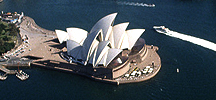Chinese Entry Process and Considerations for Australia
Entry Process:
Obtaining Boarding Pass and Checking in Luggage:
To obtain an international flight boarding pass and check in luggage, you only need to have your passport ready.
If you haven't pre-selected your seats, you can request assistance from the staff to help you choose seats together. (Typically, airplanes have four seats in the middle, with aisles on both sides, and two window seats on each side. For daytime arrivals, you can choose window seats. For overnight flights, it's advisable to sit further from the restroom to avoid noise from people coming and going).
When obtaining your boarding pass, you will also check in your luggage. Valuables and cash should not be checked in with your luggage. It's advisable to adhere to the airline's requirements for luggage size and weight, avoiding excess baggage fees.
Passing through Chinese Immigration:
After receiving your boarding pass, you can proceed to the international flight border control. At this point, you should have your passport and boarding pass ready.
While waiting for border control, you'll need to queue and wait your turn for security checks. Only one person is allowed in front of the border control window at a time, so make sure to stay behind the yellow line.
If you have an electronic visa, the border control officer may ask if it's an electronic visa. You can simply answer "yes." When the border control officer stamps your passport, it indicates that you've exited the country.
Security Check:
After passing through border control, the next step is a security check. There may be a significant number of people in line, so be patient.
During the security check, you generally won't need to show identification. Instead, you'll be required to place metallic items and electronic devices into trays provided for this purpose and place other belongings on the conveyor belt.
Pay attention to the regulations regarding liquids in your carry-on luggage; each individual liquid container should not exceed 100 milliliters.
Follow instructions given by security personnel, which may include removing outerwear or shoes, as required.
Waiting at the Boarding Gate:
Locate your designated boarding gate as indicated on your ticket. It's essential to check if the gate information matches the airport's signs.
If the gate information is different from what's on your ticket, seek assistance from airport personnel promptly, as the gate may have been changed temporarily.
Upon arrival at the boarding gate, find a place to rest that's near the gate, making it easier to hear announcements.
While waiting to board, you'll find numerous duty-free shops at the airport where you can shop. However, make sure to keep track of your boarding time. Boarding typically begins around half an hour before the flight's departure.
Boarding:
When the announcement is made that boarding is allowed, ensure you have your boarding pass ready and join the boarding queue.
Check your boarding pass to determine your seat and inform the flight attendant of your location.
Find your seat according to the seat numbers displayed above, and stow your luggage.
Ensure you prepare all necessary documents in advance, such as your passport and visa.
Adhere to the airline's baggage regulations to avoid extra charges.
Comply with the rules regarding liquids in your carry-on luggage, ensuring that no single container exceeds 100 milliliters.
Follow security regulations for the placement of metal items and electronic devices in designated trays.
Pay attention to gate signage and possible changes.
Be mindful of duty-free shopping but ensure you don't miss your boarding time.
Have your boarding pass ready and stay attentive to announcements.
Following the above steps and considerations can help facilitate a smooth entry process into Australia. It's crucial to familiarize yourself with airline and Australian immigration policies beforehand to ensure a seamless experience.
Considerations for Entry into Australia:
Prior to Entry:
Before entering customs, you must fill out a yellow arrival card, which includes personal information. Additionally, you will be provided with a white declaration form.
Upon entering customs, your belongings will undergo thorough inspection to ensure restricted items are not brought into the country. Restricted items include not only dangerous goods like firearms, weapons, and drugs but also food, animals, and various everyday necessities.
Preparations:
Before traveling to Australia, ensure you have prepared your passport, visa, plane ticket, and required health certificates, as well as obtaining an entry visa through the Australian embassy or consulate in China.
Complete the " Passenger Card" with accurate and truthful information. It's especially important that your visa matches the purpose of your visit to Australia. Falsifying information or concealing information is subject to severe penalties.
Luggage:
Except for specific items that require entry through designated entrances for inspection, a general check is conducted for most items upon entry.
In addition to goods that require declaration, items intended for commercial use, those carried in significant quantities, or items valued at or exceeding 10,000 Australian dollars must be declared. Failure to do so can result in fines, and in severe cases, imprisonment for up to ten years. If you have any questions during entry, you can ask the quarantine personnel at the Customs Office.
Items acquired unexpectedly (including those obtained overseas) and tax-free items purchased within Australia must be declared if their total value exceeds 400 Australian dollars.
Restricted Carriage of Items:
Prohibited food items include any dairy and egg products other than those produced in New Zealand. This prohibition extends to items such as dairy products and egg-filled pastries like egg tarts and mooncakes.
All forms of food, whether dried, pickled, or otherwise, and whether traditional Chinese medicine or Western medicine, must be declared and require approval from Customs to be carried into Australia. Failure to do so results in corresponding penalties.
Penalties for food items can be as high as nearly 10,000 Australian dollars, and there are dose limits for bringing medication; presenting a doctor's prescription is required when carrying a large quantity. In addition, each infant is allowed to carry one kilogram of baby food, and steroids are absolutely prohibited from being carried into Australia.
Prohibited items also include wooden products, grass products, growing media, soil (including objects with soil attached), crop seeds, animals, plants, and any part of animals or plants. Such items must meet quarantine conditions and be accompanied by certification from Australian quarantine authorities.
Some items that can be carried into Australia also have quantity restrictions, such as alcoholic beverages, which must not exceed 1,125 milliliters, and cigarettes, which must not exceed 250 pieces.
Some items, such as fur, plant seeds, unfinished leather products, and animal specimens, must be inspected by customs quarantine officials. In general, items that are free from animal or plant diseases or pests will be returned to the entrant. Some items may require further processing before being returned, such as cars brought from abroad, which typically need to be cleaned after inspection.
Items that do not meet inspection standards are confiscated and destroyed.
Compliance with these entry considerations and regulations is essential to ensure a smooth and lawful entry into Australia. Adhering to these guidelines is crucial to avoid penalties, fines, or legal consequences during your entry and stay in the country.








